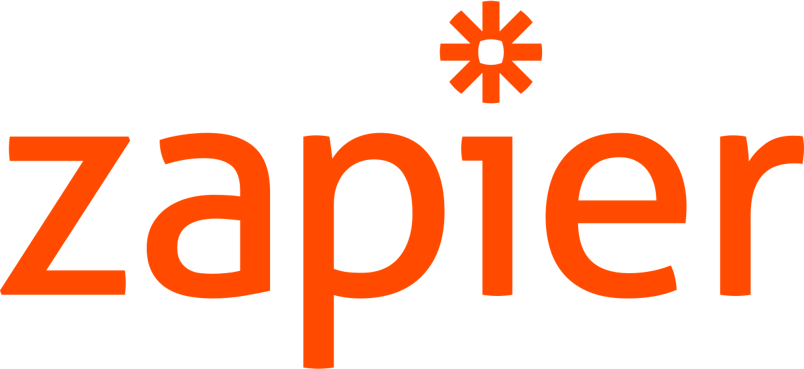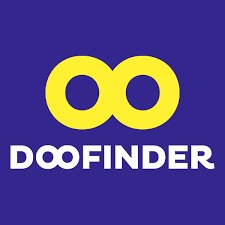Product Led Growth Examples: How Top Companies Win Customers
In the last decade, you've likely noticed a shift in how software companies attract and retain users. This change, called product-led growth (PLG), has revolutionized the way businesses approach customer acquisition and expansion.
What is Product Led Growth?
Product-led growth is a strategy where the product itself drives user acquisition, conversion, and retention. Instead of relying solely on traditional marketing or sales tactics, companies using PLG focus on creating a user experience so compelling that customers naturally want to try, buy, and share the product.
The Rise of Product Led Growth
The surge in PLG can be traced back to two key factors:
1. IT Consumerization: As technology became more user-friendly, employees started bringing their preferred tools into the workplace.
2. SaaS Explosion: The rise of cloud-based software made it easier for users to discover and try new products independently.
These changes led to a bottom-up approach where end-users, not just IT departments, influence software adoption in organizations.
How Product Led Growth Works
In a PLG model, you might discover a new tool through:
Word-of-mouth recommendations
Online searches
Free trials or freemium versions
This approach allows you to experience the product's value firsthand before making a purchase decision.
The Birth of a Strategy
A venture capital firm, OpenView, recognized this trend in 2016 and formed a group to study it.
They named this emerging strategy that was reshaping the software industry "product-led growth.”
15 Product-Led Growth Examples That Drive Success
Learning from successful companies can help you transform your own strategy. Let's explore some standout product-led growth examples that have reshaped the software industry.
1. HubSpot: Successful Pivot to PLG

HubSpot's transition to a product-led growth model showcases how established companies can adapt. Their strategy involves:
Adopting a customer-centric perspective
Revamping communication and sales team incentives
Providing smooth and hassle-free onboarding experience
While HubSpot still uses sales reps for enterprise customers, many found the platform organically through the product-led strategy.
2. Grammarly: Prioritizing User Needs

Grammarly's CEO, Brad Hoover, emphasizes the importance of "building an exceptional product" by focusing on users and their problems. Their approach includes:
In-depth knowledge of user needs
Frictionless onboarding experience
Intuitive product tours
By making writing easier from the start, Grammarly quickly demonstrates its value, encouraging long-term loyalty and adoption.
3. ClickUp: User-Driven Development

ClickUp's success in the software space stems from:
Utilize user feedback for continuous product development
Making the platform versatile
Rapidly iterating on features and integrations
This user-oriented approach has broadened ClickUp's traffic in almost all user segments.
4. Zoom: Frictionless Communication

Zoom's success in the video conferencing market demonstrates that the best product often wins. Despite strong competition, Zoom has captured over 40% market share due to its user-friendly approach. Key elements of Zoom's PLG strategy include:
Simplicity and reliability in their platform
User-friendly interface
Seamless onboarding process
Zoom's mission to "make video communications frictionless" has resonated with users, driving widespread organic growth. This approach positioned Zoom perfectly to meet the phenomenal rise in demand for high quality video communication tools, especially during the surge in remote work.
5. Zapier: Product-Led SEO Strategy

Zapier combines smooth user onboarding with a powerful SEO strategy:
Promoting integrations with the help of engaging content and search results
Educating potential customers on automation needs
Targeting high-volume keywords to drive traffic
This approach has enabled Zapier to earn hundreds of thousands of unique visitors and potential customers and established it as a leader in automation.
6. Slack: Enterprise Adoption Through Individual Users

Slack's strategy to product-led growth focuses on:
Simplifying workplace communication
Offering a freemium model that appeals to individual users
Leveraging individual adoption to drive enterprise sales
Slack's strategy allows users to quickly realize the product's value, encouraging them to advocate for company-wide adoption.
7. SurveyMonkey: Mastering Viral Marketing

SurveyMonkey's product-led growth strategy revolves around viral marketing tactics:
Users experience the product by completing surveys
Easy-to-use and visually appealing surveys serve as powerful marketing tools
The act of sending surveys triggers referrals early in the user journey
This approach effectively covers multiple stages of the AAARRR (Pirate) Funnel, from awareness to referral, making SurveyMonkey a standout example of product-led marketing.
8. Calendly: Solving a Universal Problem

Calendly's success stems from addressing a common pain point: scheduling. Their product-led growth strategy includes:
Offering a solution to a widely recognized problem
Providing a seamless user experience
Leveraging product-led marketing tactics similar to SurveyMonkey
By allowing users to experience the product through others' scheduling links, Calendly effectively markets itself and drives adoption.
9. Dropbox: Growth Through Referrals

Dropbox's product-led growth strategy centers on:
Addressing the need for simple, accessible file-sharing
Creating a simple and intuitive, drag-and-drop interface
Implementing a referral program that offers extra storage space
By incentivizing it's existing customers to invite their family and friends, Dropbox turned its user base into brand ambassadors, driving rapid growth and adoption.
10. Vercel: Developer-Focused Platform

Vercel's success in the developer tools space is built on several PLG pillars:
User-centric design with an intuitive interface
Freemium model offering significant value in the free tier
Strong community engagement
Extensive integrations with popular development tools
This approach has led to high user numbers, retention rates, and conversion rates.
11. DocuSign: Simplifying Electronic Agreements

DocuSign is one of the leading names in the legal software industry through its PLG approach:
Offering a 30-day free trial
Allowing users to receive and send e-signatures without an account
Providing a smooth initial product experience
This strategy has helped DocuSign raise more than $500 million in funding and become a go-to solution for electronic agreements.
12. Crunchbase: Personalized Business Insights

Crunchbase leverages PLG through:
Simple sign-up process
Personalized onboarding experience
Customized company recommendations based on user preferences
This tailored approach helps users quickly find value in the platform.
13. DooFinder: Transparent Pricing and AI-Powered Search

DooFinder's PLG approach includes:
Clear, accessible pricing information
Transparent feature comparison across plans
AI-powered search to enhance user experience
By predicting user needs and providing clear information, DooFinder helps users make informed decisions quickly.
14. Shopify: Frictionless E-Commerce Setup

Shopify's PLG strategy focuses on:
Painless onboarding process
Immediate access to store setup without email verification
User-friendly interface for quick start
This approach has helped Shopify attract millions of daily users.
15. Figma: Collaborative Design Drives Growth

Figma's product-led growth strategy centers on collaboration. Key aspects include:
Real-time collaborative features
Creating a viral acquisition loop through user invitation.
Allowing multiple users to work on a single file simultaneously
By fostering a collaborative community, Figma has managed to stand out in the competitive design tool market.
Key Takeaways from Product-Led Growth Examples
1. Focus on user experience: Prioritize intuitive interfaces and smooth onboarding.
2. Offer immediate value: Allow users to experience core features quickly.
3. Leverage freemium models: Provide significant value in free tiers to attract users.
4. Encourage virality: Implement referral programs and collaborative features.
5. Personalize the experience: Tailor recommendations and features to user needs.
6. Prioritize transparency: Offer clear pricing and feature information.
7. Build community: Foster user engagement and loyalty through community initiatives.
By studying these successful product-led growth examples, you can identify strategies to adapt for your own business, driving user acquisition, engagement, and retention through your product.
Conclusion: Embracing Product-Led Growth for Your Business
Product-led growth has transformed the way successful companies acquire, retain, and delight their customers. From Grammarly's focus on user needs to Shopify's frictionless onboarding, these examples demonstrate the power of putting your product at the center of your growth strategy.
As you consider implementing product-led growth in your own business, remember that success hinges on deeply understanding your users and creating an exceptional product experience. This is where expert guidance can make all the difference.
Ready to supercharge your product-led growth strategy?
Our UX AI Agency specializes in crafting intuitive, user-centric designs that drive adoption and retention. We combine cutting-edge AI technology with human-centered design principles to create products that users love and share.
Don't let your product get lost in the crowd. Contact us today to learn how we can help you implement these product-led growth strategies and create a user experience that sets you apart from the competition. Let's work together to unlock your product's full potential and drive sustainable growth for your business.
FAQ
1. What is an example of a growth product?
Products currently in the growth stage include artificial intelligence, smartphones, and electric vehicles. Companies with products in this stage often respond by expanding their supply chain distribution to meet increasing demand.
2. Is Apple considered product-led or market-led?
Apple is generally viewed as a marketing-led company. Their focus is on creating products that are user-friendly and aesthetically pleasing, with marketing playing a crucial role in their success.
3. What's considered the opposite of product-led growth?
The opposite of product-led growth is often seen as Sales-Led Growth (SLG). This approach focuses on hiring a sales team to directly reach out and sell the product to potential customers. In SLG, the sales team is the primary driver of customer acquisition and growth.
4. How does PLG differ from SLG?
Product-Led Growth (PLG) centers on quickly addressing user pain points with a superior product. In contrast, Sales-Led Growth (SLG) emphasizes the art of selling, with sales teams taking the lead in customer acquisition and growth.
5. How many companies use product led growth?
According to recent surveys, a majority of B2B SaaS companies have adopted a product-led growth strategy - specifically, it exists in 58% of companies surveyed. Furthermore, among those who have implemented PLG, 91% plan to increase their investment in this approach in 2023.
6. Who coined the term "product-led growth"?
The term "product-led growth" was originally coined by Blake Bartlett at OpenView in 2016. However, it's worth noting that the principles defining this approach had been in practice before the term was officially introduced.





